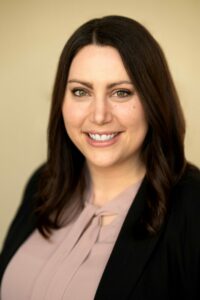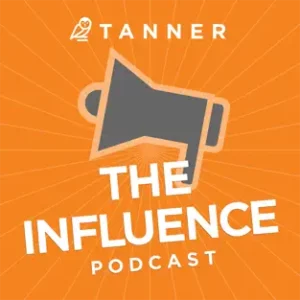We are very excited to provide you with the summer edition of Tanner LLC’s Not-for-Profit News! We are providing our quarterly newsletter at no cost to give back to the organizations that are making such an impact for good, especially in these challenging times. We hope you continue to find the articles timely and valuable. We invite you to provide us the names and email addresses of anyone else you know who might also enjoy receiving future editions of the newsletter. We hope you are enjoying your summer!
Protecting Your Assets
A Look at Occupational Fraud in Nonprofits

According to the Association of Certified Fraud Examiners Report to the Nations: 2020 Study on Occupational Fraud and Abuse, occupational fraud—which is fraud committed by employees against employers—is among the costliest types of financial fraud. The organization estimates that 5 percent of revenues are lost to fraud each year.
Of course, nonprofits are not exempt from this crime. In fact, the ACFE says nonprofit organizations can be more susceptible to fraud because they often have fewer resources to prevent and detect losses, less oversight, and a lack of certain internal controls.
Three Types of Schemes
Three types of schemes account for 94 percent of occupational fraud aimed at nonprofits. ACFE research indicates that the median duration of fraud is 14 months and that quick detection is key to reducing financial losses.
For nonprofit organizations, corruption is the most common fraud scheme, accounting for 41 percent of cases. Corruption includes bribery, illegal gratuities, economic extortion, and conflicts of interest such as purchasing and sales schemes. Thirty percent of cases involving nonprofit organizations involve billing schemes, which include personal purchases, shell companies, and invoices from non-accomplice vendors.
Expense reimbursement fraud accounts for 23 percent of cases examined. These schemes include mischaracterized, overstated, and fictitious expenses, as well as multiple reimbursements.
Who are the Perpetrators
The higher ranking the perpetrator, the greater the loss. Losses also increase with the employee’s tenure. There’s also a correlation between the perpetrator’s level of education and median loss—the higher the degree the greater the loss.
People in the owner/executive role account for 39 percent of cases and cause median losses of $250,000. Those at the manager/supervisor level perpetrate 35 percent of cases and cause median losses of $95,000. Lower-level employees account for 23 percent of cases and cause median losses of $21,000. More than 70 percent of fraudsters are men, and men cause significantly greater median losses than women. Fifty-three percent are between the ages of 31 and 45.
Nonprofit Weakness
The ACFE identified three top control weaknesses that leave nonprofit organizations particularly susceptible to occupational fraud: a lack of internal controls and management review and overrides of existing internal controls.
In addition, nonprofit organizations have fewer controls in place compared to other organizations. For example, nonprofits are less likely to have an internal audit department, formal fraud risk assessments, and surprise audits.
Detection
Interestingly, the lowest-tech fraud detection method is the most common, with 40 percent of fraud schemes uncovered by a simple tip or complaint. This is nearly three times more common as the next-most-common method, which is via internal audit.
Using tip hotlines is a particularly effective way of lowering losses and speeding detection, and fraud awareness training increases the likelihood of detection by tip. Telephone hotlines, email, and online forms are all equally attractive to whistleblowers when it comes to submitting tips.
Act Now
Nonprofit organizations work hard for every penny, and your donors are counting on you to be responsible stewards of their donations. Form 990 asks if the organization became aware of a significant diversion of assets. Also, the loss may be considered an excess benefit transaction, which carries a 25 percent tax, which could increase to 200 percent if not corrected in a timely manner. For private foundations, this may be considered a self-dealing transaction. The IRS may also select the Form 990 for audit.
Let’s talk! A risk assessment can illuminate areas that leave your organization vulnerable to fraud.
Word to the Wise
Four Steps to Building Board Diversity

It’s well known that nonprofit boards historically have a lack of diversity.
Ensuring board diversity has taken on new urgency recently as leaders have more fully recognized the value of including more women and people of color in the boardroom. When boards don’t reflect the communities or populations they serve, they risk becoming stagnant and missing opportunities for growth and funding.
But just recognizing a need for diversity doesn’t make it happen. Building a diverse board requires a mindful, dedicated approach. Here are four ideas to help you cultivate diversity on your board:
1. Access
Before you define diversity for your organization, it’s best to begin with an understanding of your current board’s strengths and weaknesses. Many boards don’t talk regularly about areas of potential improvement. Self-assessment is a powerful tool for boards, and doing so regularly makes it less daunting.
Try a strengths, weaknesses, opportunities, and threats (SWOT) analysis. Break down the assessment into your major governance areas—strategy, fundraising, advocacy, performance, and diversity. Making diversity part of the normal conversation is key to more open discussions about next steps.
2. Define Success
Does your board understand and embrace the broad concepts of diversity, equity, and inclusion (DE&I)?
These three ideas work together to create a welcoming and opportune environment. Diversity is a range of differences, while equity covers fair treatment, advantage, and access. Inclusion means cultivating a culture of respect, support, and value. In combination, DE&I fosters the hope that board members will share their different backgrounds, ideas, and opinions in a fully engaged, positive manner in the governing process.
3. Recruit with intent
Simply checking the box on gender and racial diversity will not provide the long-term benefits your board needs. You want great directors with the skill sets and talents your organization demands.
Networking is a must, of course, but your board must also take steps to recruit more effectively and broadly. One idea is to look for candidates below the C-level. Seek smart up-and-comers who can add unique voices to the board. Also, depending on your current board make-up, adding retirees or active executives can open the door to more diverse candidates.
Finally, you must embrace a diversity succession plan, now. A proactive approach will give you time to replace board members with candidates who meet your diversity goals.
4. Take a long view approach
Recognize that there are no quick fixes for developing a diverse, equitable, and inclusive board. It’s a process that changes the board culture and not just the demographics. With this in mind, it’s smart to take a long view and evaluate your progress often.
For example, take time to cultivate relationships in underrepresented groups, organizations, and constituencies so that as you’re looking at them for board talent, they’re also looking at you for places to serve. Be transparent about your desire for more board diversity and talk about it at your events and fundraisers. Share your plans and solicit input.
A diverse board will help you meet the challenges your organization faces, now and in the future.
We’ve worked with many nonprofit boards to set goals and create action plans. Let us know how we can help you.
Financial Relief
It’s Not Too Late for Covid Assistance

Thankfully, the coronavirus is waning, but its impact on nonprofit organizations will be felt for a long time. If your organization hasn’t already taken advantage of all available programs to help nonprofits, it’s not too late for some assistance.
Late in 2020, the Consolidated Appropriations Act (CAA) of 2021 passed both houses of Congress, providing $900 billion in additional funding for COVID-related aid. This second round of funding extends certain programs, as well as broadens the application of funding, in some cases retroactively.
Paycheck Protection Program (PPP)
The deadline for PPP Second Draw Loan funding passed on May 31, 2021. While at least 60 percent of the loan must be used for payroll expenses, both payroll and non-payroll definitions were expanded and clarified in the CAA.
Eligible expenses now include additional employer-paid benefits, mortgage interest, rent, utilities, worker protection costs related to COVID-19, uninsured property damage costs caused by looting or vandalism during 2020, and certain supplier costs and expenses for operations. Additionally, the covered period is more flexible, between 8 and 24 weeks.
Applying for PPP loan forgiveness also became easier, particularly for organizations with PPP loans under $150,000. A simplified forgiveness process for these borrowers requires only a one-page certification letter attesting to the number of employees retained, the amount spent on payroll costs, and the total loan value.
Economic Injury Disaster Loans (EIDL)
The CAA added $20 billion in funding for the EIDL program and extended it through the end of 2021. Second round EIDL loans are again being administered and serviced by the Small Business Administration (SBA) and offer low interest loans (30-year fixed at 2.75 percent for nonprofits) with no prepayment penalty or fees.
A new maximum loan amount of $500,000 was announced in March 2021, and organizations that had smaller loans approved prior to April 7, 2021 may be eligible to apply for an increase.
Unlike PPP loans, EIDLs have fewer restrictions placed on how the money can be spent. It can be used for working capital and normal operating expenses. Loans for $25,000 or less don’t require collateral, which can be helpful for many nonprofits.
Shuttered Venue Operator Grants
This SBA grant, also known as the Save Our Stages (SOS) program, provides grants up to $10 million (or 45 percent of 2019 gross revenue) to theater and live venue operators, performing arts organizations, certain museums, and talent representatives. Of the $16 billion allocated for this funding vehicle, $2 billion is reserved for entities with 50 or fewer full-time employees.
This grant has similar eligibility requirements to second-round PPP in terms of decline in gross earned revenue from a quarter in 2019 and the same quarter in 2020. SOS grants can be used to cover payroll, rent, mortgages, and renovations required to meet health and safety protocols as venues reopen. The SBA is prioritizing SOS applications, starting with applicants that have suffered the greatest losses.
As you might expect, applying for these COVID relief programs can be complicated. The SBA website has FAQs and other information that can provide guidance.
If you have questions about your COVID relief options, please contact our office.
New Requirements for Contributed Nonfinancial Assets
Last September, the Financial Accounting Standards Board (FASB) issued Accounting Standards Update (ASU) 2020-07 regarding the disclosure and presentation of contributed nonfinancial assets. The purpose of the update was to increase transparency about how these types of assets are measured, as well as how many of them are used in the nonprofit organization’s programs and other activities.
Nonfinancial assets include gifts, donations, gifts-in-kind, and donated services. They also include fixed assets such as land, buildings, and equipment, or use of such fixed assets, materials and supplies, intangible assets, and services.
To increase reporting transparency, the ASU requires contributed nonfinancial assets to be presented as a separate line item apart from contributions of cash and other financial assets in the statement of financial position.
The amounts of these contributions must be further broken down and disaggregated by category. For each category, the organization must further disclose:
- Qualitative information about whether the contribution was monetized or utilized during the reporting period. If utilized, the ASU also requires a description of the programs that used the contribution.
- The organization’s policy (if you have one) about monetizing versus utilizing contributed nonfinancial assets.
- A description of any donor-imposed restrictions on the assets.
- A description of the valuation techniques and inputs used to arrive at a fair value measure at initial recognition.
- The principal or most advantageous market used in the valuation if it is a market in which there is a donor-imposed restriction on the sale or use of the contribution.
To comply with the ASU, your organization must have a tracking process in place to meet these new disclosure requirements. The new requirements apply retrospectively and take effect for annual reporting periods beginning after June 15, 2021 and for interim reporting periods beginning after June 15, 2022.
If you’d like to receive future editions of the Not-For-Profit News, please visit this page.


